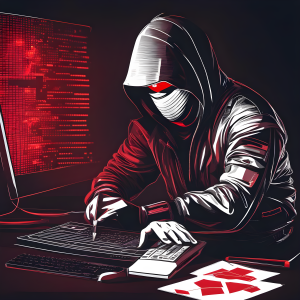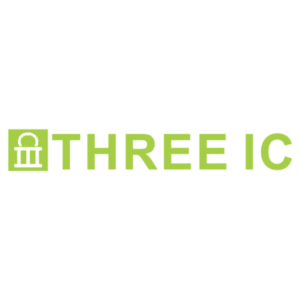

We exist in an era where our lives and livelihoods are intricately interwoven with the digital world, and this dependence, however, brings with it a menacing shadow – the threat of cyberattacks. One particular form of this digital malice, known as ransomware, looms ominously. Ransomware, a malevolent software breed, holds computer systems hostage, denying access until a ransom is paid. In this light, it’s clear that grasping the concept of ransomware recovery has morphed from a mere advantage to an essential survival skill for individuals and businesses worldwide.
Ransomware attacks cast a wide net, ensnaring organizations of diverse industries and countries, not sparing even Hong Kong. The toll exacted by these assaults extends beyond mere financial implications. Data loss, operational downtime, and reputational damage can often eclipse the ransom amount in terms of devastation.
At the heart of a ransomware attack lies a sinister game of digital blackmail. Wielding ransomware as their weapon, cybercriminals encode files on the targeted individual’s or network’s computer, rendering them unreachable. To regain access, victims are hit with a ransom demand, typically requiring payment in a virtually untraceable cryptocurrency in exchange for the coveted decryption key.
Think of a ransomware attack as a three-act play:
In the history of cybercrime, certain ransomware attacks have gained notorious prominence. The WannaCry attack of 2017 was one such cyber catastrophe, holding hostage hundreds of thousands of computers across 150 countries. Another infamous case was the NotPetya attack, resulting in an astronomical financial loss amounting to billions.
Ransomware typically enters a system when a user unknowingly opens an infected file or clicks on a malicious link. Email phishing is a common vector, but attacks can also originate from malicious websites or infected removable drives. Businesses and individuals alike must learn how to prevent ransomware to mitigate the risk and potential impact of these attacks.
To guard against ransomware attacks, several proactive measures can be taken:
While these protective measures are integral, they are not an all-inclusive solution. They represent vital strides towards establishing a sturdy defense against the ever-looming threat of ransomware attacks. Always remember that the landscape of cyber threats is ceaselessly evolving – vigilance, along with the continuous enhancement of your security protocol, is the cornerstone of cybersecurity.
Surviving a ransomware attack requires not only preventive measures but also a well-structured ransomware recovery strategy. Implementing an effective recovery plan can significantly reduce the impact of a successful ransomware attack, enabling you to return to normal operations with minimal delay.
Always remember the saying, “Prevention is better than cure,”. Putting in place a thorough ransomware solution can prevent attacks from happening, thus sparing your company a lot of time, money, and stress in the long run.
In the unfortunate event of a ransomware attack, you might find yourself grappling with the challenge of how to recover ransomware-encrypted files. Here are some strategies you can employ:
Should you find yourself a victim of a ransomware attack, it’s critical to engage an IT consultant without delay. Their expertise can mitigate the damage and provide you with the most effective strategy for your unique situation.
Ransomware recovery is not a journey any business or individual would choose to embark on. Yet, the increase in the number of ransomware attacks globally implies that it’s not a matter of if but when you may have to face this daunting challenge. This guide provides the insights you need to prepare for, prevent, and recover from such an incident. However, remember that the realm of cybersecurity is dynamic, requiring constant vigilance and ongoing education.
Our exploration of what is a ransomware attack, how it operates, and its potential impact underlines the severity of the threat posed. Yet, the more knowledge you arm yourself with, the better your chances of preventing or at least minimizing the damage from an attack.
In learning how to prevent ransomware, we dove into a variety of defensive strategies. From staff education and regular system patching to network segmentation and the use of multi-factor authentication, we find that a layered defense strategy offers the best protection against these insidious attacks.
We’ve also emphasized the role of a dedicated ransomware data recovery strategy in limiting the impact of an attack. Recognize the value of this undertaking as it can mean the difference between a minor setback and a major disruption.
How to recover ransomware encrypted files presents a challenge for many, but with the appropriate methods and tools, it’s far from an impossible task. Utilizing backups, Windows’ own features, data recovery software, and ransomware decryption tools can significantly enhance your chances of recovery.
The fight against ransomware is ongoing, requiring constant vigilance and proactivity. Partnering with experts offering ransomware detection and IT support services can provide invaluable support in this battle. Don’t hesitate to seek out an IT consultant to help you establish the best ransomware solution tailored to your needs.
While challenging, it is possible to recover some files without a decryption key using methods such as restoring from backup or using specialized data recovery software.
Many trusted cybersecurity firms offer ransomware decryption tools. However, their effectiveness depends on the type of ransomware involved. Always ensure you're downloading these tools from reputable sources to avoid further compromising your systems.
Regular data backups, using advanced security software, implementing multi-factor authentication, and educating staff on safe online practices can significantly reduce your vulnerability.

THREE IC, a prominent provider of Cyber Security and IT solutions, produces the majority of the blog posts featured here. These articles are authored by a team of professionals employed at THREE IC, including content writers and marketing experts. They are dedicated to creating informative content on a wide range of subjects that are relevant to our readers.
Our team ensures that the published articles are accurate and beneficial for our clients and partners, helping them stay informed about the latest trends in Cyber Security and IT and understand how these advancements can benefit their organizations.

address
address
TEL
+65 XXXX XXXX
info@threeic.com
address
Singapore Address here
address